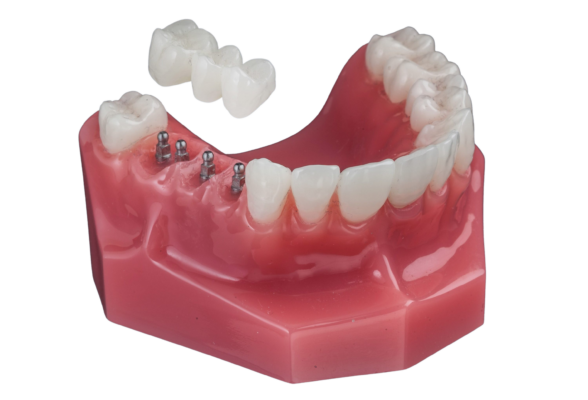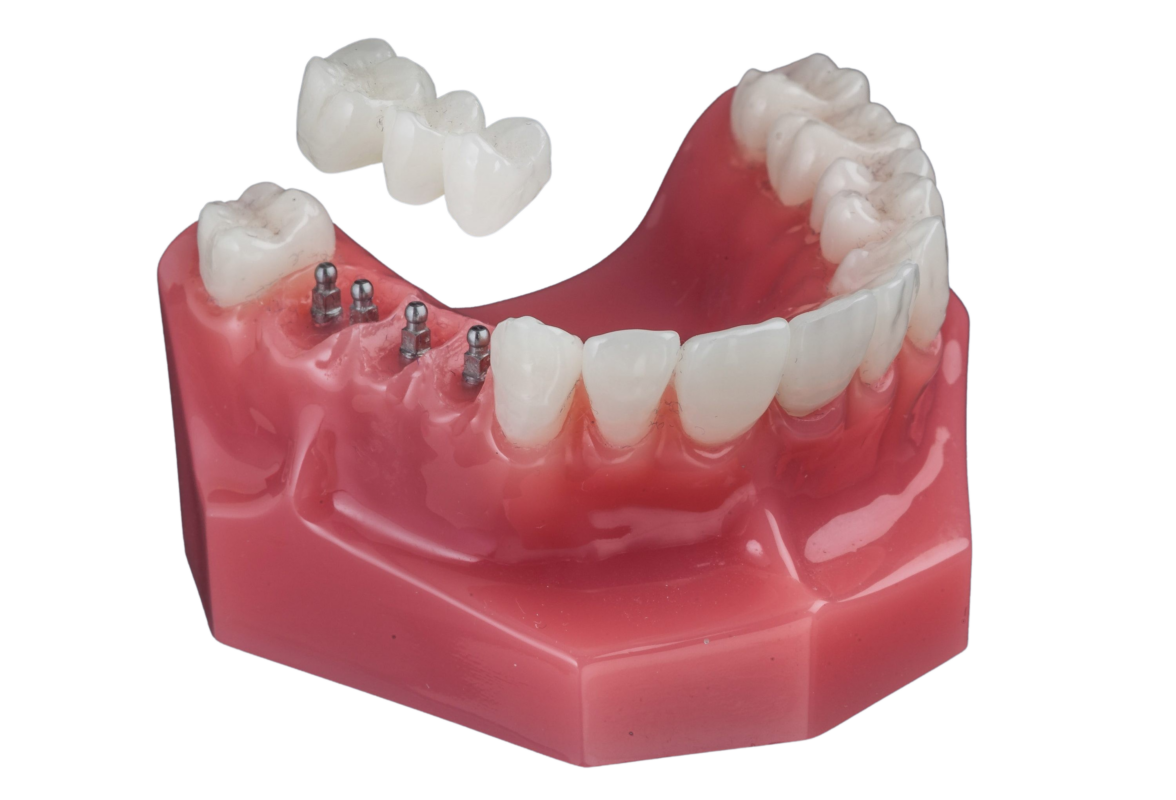The first primitive bridges built by man were log bridges, often made from fallen trees. They were supported only by the pieces of land the log rested on, and this tenuous connection limited them in terms of length and stability. Modern bridges, however, are supported by many different methods, such as cables, trusses, and arches. However, when a bridge is so long that it needs to be supported from below by a vertical base, that base is known as a pier or pile. This base gives the bridge more support from below and adds stability that ropes, cantilevers, or cables can’t match. For years, traditional dental bridges functioned like those primitive log bridges by connecting to teeth on either side; they served their purpose but were limited in many respects. With dental implants providing additional support from below, modern implant bridges are far more stable and functional than ever.
Understanding the Role of Dental Bridges
 So, what is a dental bridge? Think of it as a way to literally bridge the expanse left by a missing tooth. A traditional bridge consists of replacement teeth held up by dental crowns on either side of the gap. It’s like a roadway between two cliffs, with the crowns acting as the anchor points on each end.
So, what is a dental bridge? Think of it as a way to literally bridge the expanse left by a missing tooth. A traditional bridge consists of replacement teeth held up by dental crowns on either side of the gap. It’s like a roadway between two cliffs, with the crowns acting as the anchor points on each end.
Replacing your missing teeth with a bridge has several quality-of-life and oral health benefits:
- Functional restoration: A complete set of teeth helps with biting and chewing, ensuring you can enjoy your favorite foods without difficulty.
- Clearer speech: Missing teeth, especially front ones, can affect speech by adding unwanted fuzziness and lisps. Bridges help you enunciate clearly once again.
- Improved oral health: Just like a vacant house can become a target for unwanted pests, a space in your mouth can invite unwanted bacteria. Empty tooth sockets can also allow the surrounding teeth to shift, causing misalignment. Bridges keep all your teeth in their rightful place.
- Increased confidence: A full, radiant smile can boost self-esteem, making social situations more enjoyable.
While a traditional bridge does provide these benefits, it does nothing to replace your missing tooth root. An implant-supported bridge replaces the root, which prevents your jawbone from deteriorating.
Types of Implant Bridges: Which One Is Right for You?
While the end goal is the same—replacing your missing teeth—not all bridges are created equal. The ideal choice often depends on the condition of your adjacent teeth and the location of the missing tooth.
- Traditional bridges: The most common type of bridge involves placing a crown on both teeth adjacent to the missing one, with a pontic (fake tooth) in between.
- Cantilever bridges: We would use this type of bridge when you only have teeth remaining on one side of the missing tooth. They work the same way that a balcony only connects to a building on one end. They’re not the most common solution but are essential in certain cases.
- Maryland bridges: This type of bridge uses porcelain or metal wings on either side of the bridge that we bond to your remaining teeth. This option is only viable for front teeth, as the connection isn’t strong enough to withstand the force of molars.
- Implant bridges: These are the most sturdy and stable option. Instead of relying on surrounding teeth for support, these bridges receive support from below via dental implants. It’s like having a team of support piers underneath a land bridge, increasing its stability and durability.
The choice between these types largely depends on individual circumstances and expert advice from dentists like Dr. Hall or Dr. McNeil.
The Benefits of Implant Bridges
An implant bridge supported by dental implants, or mini dental implants, offers the highest levels of stability, versatility, and functionality of all dental bridge options. The process begins with a free consultation and examination. Dr. Hall or Dr. McNeil will assess your oral health and take X-rays to customize your implant placement plan.
After drilling a tiny pilot hole, we place the implant directly into the jaw, giving the bridge a stronger connection than relying on your other teeth for support. With dental bridges, we can replace anywhere from two teeth to an entire arch with a roundhose bridge. The small size of mini implants requires less jawbone space, allowing more patients to be viable candidates for implant bridges. Finally, the implant itself acts as a replacement for your tooth root. It stimulates the jawbone to retain bone and tissue density, something other bridges can’t do.
The slim profile of the mini implant means that we can place it with no incisions or stitches. This minimally invasive procedure also shortens the placement and healing timeline compared to traditional dental implants, making the entire process faster and more affordable.
Ready to Bridge the Gap in Your Smile?
Losing a tooth can be a setback, but it’s not the end of the road. With dental bridges, especially implant bridges, you can regain the look, feel, and function of your teeth. Schedule a free implant consultation today, and let’s explore the best dental bridge options to restore your smile.

